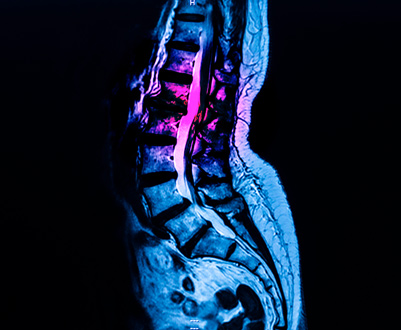Spinal Stenosis
One of the most common causes of low back and leg pain is spinal stenosis, which is caused by normal wear-and-tear of the spine. The most common cause of this is aging, as we cannot stop degenerative changes of the spine. It is estimated that approximately 95 percent of people age 50 and older have some level of degeneration of the spine. However, a small percentage of people are born with back problems that may develop into lumbar spinal stenosis, which is referred to as congenital spinal stenosis.
What is Spinal Stenosis?

The spine is comprised of a column of bones, or the vertebrae, that provides stability, flexibility, and support for the body. There are nerves that run up and down the vertebrae, as well as through the openings in these important spinal bones. The nerves send signals from the brain to the rest of the body. There are other bones and tissues that protect these nerves, but if they become damaged, it can lead to serious problems and affect everyday functions.
When the spinal column narrows and leads to compression on the spinal cord, it is called spinal stenosis. In many cases, this narrowing is minimal, which means there are no symptoms. However, if the narrowing is extreme, it can cause compression of the nerves.
Symptoms of Spinal Stenosis
Spinal stenosis is a gradual disease that develops over time. As the condition progresses, so do the symptoms. Some of the most common symptoms associated with spinal stenosis include:
- Weakness in the legs or arms
- Lower back pain when standing or walking
- Numbness in the legs or buttocks
- Balance problems
People often find relief from sitting in a chair, however, this is not a long-term solution.
Causes of Spinal Stenosis
The most common cause of spinal stenosis is aging, which cannot be stopped. As we get older, degeneration is common throughout the body, especially in the spine. The tissues in the spine may thicken as the bones get larger, causing a compression of the nerves. There are also a handful of common conditions that can contribute to spinal stenosis, such as osteoarthritis and rheumatoid arthritis. One of the leading causes of spinal stenosis is inflammation, which can be caused by a wide range of factors. Some of the other conditions that may lead to spinal stenosis include:
- Spine defects at birth
- A naturally narrow spine
- Scoliosis
- Paget’s disease
- Bone tumors
- Achondroplasia
Treating Spinal Stenosis
If you are experiencing any of the above symptoms, it is imperative you make an appointment with a Crescent Pain Relief doctor right away. Before we can treat spinal stenosis, we must make an accurate diagnosis, with starts with a physical exam where we will observe your movements. X-rays, MRI scan, CT scan, electromyogram to check the health of the spinal nerves, and a bone scan may be ordered to determine the extent of your condition. Here at Crescent Pain Relief, we offer a range of treatment options to help reduce the symptoms of spinal stenosis. From physical therapy and injections to stem cell therapy, please contact us today to learn more about what we can do for your spinal stenosis.
